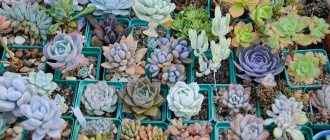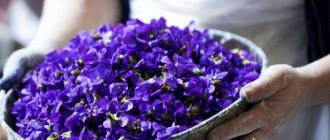A guest from South America, Monstera is a very beautiful decorative vine with large carved leaves. It can often be seen in offices; some people like to grow such a plant in residential premises. There are quite contradictory opinions about the monster. Some consider this plant not only beautiful, but also useful. Others, who believe in omens and superstitions, claim that this plant should not be kept in the house. Some believe that when a monstera is in the house, omens come true, while others grow it and do not observe any negative effects.
Dispelling popular myths
Monstera, an inhabitant of humid subtropics, reaches gigantic sizes in natural conditions. This large vine grows up to 40 meters or more in length, twining around tall trees. Additional long roots grow on its trunks, which can hang all the way to the ground, entwining and growing through everything that gets in their way.
In past centuries, travelers in South America often found monstera thickets in the jungle, next to which lay the skeletons of people and animals, riddled with the roots of these plants. The sight was terrible. In fact, these were the remains of those who accidentally died not far from these thickets, and the roots then grew through everything that came across their path.
But among many peoples there were legends about a dangerous plant that lured travelers and then pierced them with its roots. Since then, monstera (translated as “monster”, “monster”) has retained an ominous mystical reputation. This is the reason why you can’t keep a monstera at home. In fact, this is a very beautiful and rather harmless plant, if you follow some precautions for its maintenance.
General
When does it bloom?
Flowering Monstera is a rare sight. It is believed that it is difficult to make it bloom at home.
Suitable conditions required:
- diffuse lighting
- regular watering and spraying
- fertile loose soil
- stock pot
- temperature 20-25°C
Monstera blooms annually in summer when conditions are met.
Monstera flower
How does it bloom?
At home, Monstera grows 5 meters in length. Adventitious roots grow and descend from the stem.
Cream flowers appear in summer. A year later, the purple fruits ripen. They are edible and have a tropical fruit aroma and pineapple flavor.
Data
- Native to South America;
- In tropical forests it reaches a height of 30-40 meters;
- Rarely gets sick;
- In demand all over the world;
- Aerial roots provide additional nutrition;
- Grows in partial shade;
- Does not tolerate direct sunlight.
Monstera in its natural environment - in the tropics
Why is the plant dangerous?
Many people grow this beautiful exotic plant in their apartments without any harm to themselves or others. But it has some features that must be taken into account when placing:
- During the day, the monstera releases oxygen, and at night it actively absorbs it. Therefore, it cannot be kept in the bedroom, especially in a small one. In general, this plant is quite large (it grows up to 3-5 meters indoors) and is suitable only for spacious rooms, especially with such properties. It belongs in offices, greenhouses, and large living rooms, where it looks very impressive.
- Whether Monstera is poisonous or not depends on the part of the plant. The juice of its leaves is poisonous (can cause poisoning and irritation of mucous membranes), so it is not recommended to grow it where there are small children or animals. Moreover, with poisonous leaves (if you chew them, you can get poisoned), it has very tasty edible fruits.
- Some esotericists consider the monstera to be an energy vampire, so they do not recommend placing it in the bedroom so as not to feel weak and overwhelmed.
Comments (4)
masmetall
03.12.2017 at 01:22 |
When we moved to a new apartment, I wanted to plant a lot of flowers. Among the flowers suggested by colleagues was a monstera sprout. While the plant was small, it fit perfectly into the interior, and then I had to part with it. My Monstera has become very big.Answer
Yulia Expert Plodogorod
01/11/2020 at 21:06 |
Hello masmetall! This culture really grows with age. Therefore, it is important to prune the plant in a timely manner.
Formation is required at a young age. Older specimens are pruned to encourage branching. Also, it is important not to forget about sanitation, removing diseased or dried areas.
But pruning still serves only as a temporary measure. In the future, you can propagate an old plant that has lost its decorative properties.
It is not difficult to propagate monstera; you can use almost any part of the plant for this. For example, the apical cutting is best rooted in water. For stem cuttings, a container with light soil is suitable, which is then covered with film or a bag.
Monstera is also propagated using leaves. But, this option is used when there are simply no other parts of the plant for propagation. The fact is that when using a sheet there is a high risk of rotting. You need to add activated carbon or aspirin to the water.
If the flower has apical layers, you need to increase the humidity around the formed roots. When the roots grow, the young specimen must be separated with a knife, treating the wounds with cinnamon.
Answer
Lera
03/04/2020 at 08:50 |
Monstera takes up too much space at home, so it is most often used in offices, foyers, and on staircases of administrative buildings. The flower is unpretentious, the main thing is not to forget to water it.
Answer
Yulia Expert Plodogorod
03/05/2020 at 01:18 |
Hello Lera! You are right, such large and decorative plants are often used to decorate various rooms. Although monstera can be called an unpretentious crop, it is important to follow other rules of care other than watering, otherwise the flower will lose its decorative effect. Shoots may turn yellow, stretch or dry out.
Monstera requires good lighting. Therefore, placing the plant in a room without windows or far from them can negatively affect its development. But you shouldn’t place the flower on the south side either, as burns may appear on the crown. Such a culture has a negative attitude towards rearrangements, so it is better to choose the location carefully from the very beginning.
The plant must be protected from drafts, especially on autumn and winter days. The temperature at this time should not be lower than 14-15 degrees. Optimal - 18. The rest of the time, normal room temperature within 20-26 degrees is suitable.
You really shouldn’t forget to water the crop. During the period of active growth, moistening should be done quite often, as soon as the earthen ball dries out. Stagnation of moisture should also not be allowed. Excessive watering is indicated by dark spots on the foliage and rotting roots. When there is not enough water, the leaves begin to dry out.
Monstera responds positively to spraying. Fertilization is recommended only when milking mature plants.
Answer
Useful properties of the flower
This flower has much more beneficial properties:
- In practice, it has been proven that this plant absorbs negative energy and can relieve headaches. To do this, you just need to stay a little near her.
- In many southern countries, this plant is considered a strong talisman for the hearth and is often planted near the house. And if you place it next to a sick person, he will quickly recover.
- It is believed that it helps improve thought processes and concentration. Therefore, in institutions it can often be seen in conference rooms and other rooms. Many believe that it creates excellent conditions for business negotiations and has a positive effect on making the right choice.
- According to Feng Shui, Monstera is perceived as a symbol and helps to make important decisions.
- It has been noticed that Monstera is an excellent green filter in the room, effectively purifying the air from dust and harmful impurities. Also, it perfectly suppresses the development of viruses and pathogenic microorganisms. It is good to place it in dry rooms to normalize air humidity.
- Monstera actively absorbs harmful micro- and electric waves and other radiation. Therefore, by placing it next to the refrigerator, microwave, TV or other household appliances, you will significantly reduce their harmful effects on the body.
Content Features
For Monstera to feel good at home, you need to keep it under bright, diffused light. It is recommended to place the flower in the east or west. If you keep it on the south side, be sure to shade it with curtains. A lack of sunlight is manifested by dull coloration of the leaves, while the aerial roots lag behind in development. Follow the basic rules.
- Don't move your monstera if it doesn't need it.
- In winter, this crop has a dormant period. The air temperature should be kept within + 14 degrees. Provide the monstera with appropriate conditions.
- Do not allow monstera to be in drafts.
- In spring and summer, water it more abundantly and add clean, settled water.
- In winter, water the flower less often. The soil should not be dry or excessively wet.
Is it worth starting a house?
So, it has much more beneficial properties than harmful ones. Therefore, everyone decides for themselves whether it is possible to keep a monstera flower at home. This plant not only serves as an excellent interior decoration, but can also fill the home with a favorable atmosphere. It is best to keep it in a spacious hallway or living room; some people find a place for it in the kitchen. But it is not recommended to place it in the bedroom or children's room.
If you are distrustful of monstera , then it is better not to have it in your home, because this flower is very sensitive to negativity and will not grow well in such conditions. With careful handling, the monstera can even bloom, although this rarely happens at home. When deciding to have one at home, you should first study its features and how to properly care for it.
Unconventional approaches to solving the issue: Feng Shui practice, signs and observations
Often, in response to the question why you can’t have a flower that is so positive from all points of view in your house, you can get the most unexpected answers:
- Monstera scares away men. Unmarried girls will not be able to find a husband, married girls will not be able to keep their existing one. The statement does not have any practical evidence, but it is better not to risk it for those who are particularly suspicious, or they will blame the plant for all their failures.
- Monstera sucks energy from households, especially if you keep it in living rooms. We can partly agree with this, because almost all indoor green spaces have a similar property. Just don’t forget that flowers readily absorb negative vibes. You just need to place the pot next to the TV, computer or microwave, then a healthy atmosphere in the house is guaranteed.
- A special role is given to flowers by the philosophy of Feng Shui. With its help there is a chance to achieve harmony and tranquility. To do this, a pot with a plant can be placed in the hallway, kitchen or living room. Then the thoughts of the family will always be in order, they will be able to resolve all issues painlessly. It is better not to keep a monstera in the bedroom, as this can lead to a cooling of the spouses’ feelings towards each other. Monstera will get along well in the office at home. It will push the occupant of the premises to take more decisive action, which will serve as an activator for career growth.
Judging by the reviews of people involved in keeping or breeding monsteras, we can only note their affection for their pets. No one notes the negative impact of the plant on health. Quite the contrary, they observe the lightness of the air in the room and the absence of asthmatic or allergic attacks.
Description of monstera
The monstera liana has another name “philodendron”, which means “amazing”, “bizarre”. Despite its gigantic size in natural conditions, the vine indoors usually grows up to 3 meters, less often up to 5 meters.
It has large, beautiful, carved leaves with numerous holes in the middle. They appeared so that in natural conditions, where there are often heavy tropical downpours, the leaves are not damaged by powerful flows of water. Young shoots have small , heart-shaped leaves without holes.
In the jungle, vines curl around tree trunks. At home, you need to install a support about 1 meter high in a pot, wrapped in sphagnum moss, which must be constantly moistened.
On its stems, upper roots grow in different places, which cannot be removed so that the plant can develop normally. They are quite delicate and must be handled with care and sprayed periodically. When they grow, it is better to dig them in with soil in a pot. But if they are already too large, then separate containers are added for them - pots with soil or jars with water.
Distribution area
Natural habitat - Southern Mexico, tropical forests of Brazil and Guiana.
In addition, in the 19th century it was introduced into Southeast Asia. In wild jungle conditions, its height can reach 30 meters. The long aboveground stem usually twines around tall trees, attaching to the trunk with the help of adventitious aerial roots. When grown in artificial conditions, it has a more modest size - in greenhouses it can reach a size of about 10 meters, in apartments - a maximum of 5.
Leaves
The leaves are large (up to 0.5 meters in diameter), round in shape, pointed at the ends with long flexible cuttings. The leaf plate is dark green in color and covered with slots of different shapes and sizes over the entire surface. The leaves of young representatives of the species are entire and heart-shaped. After reaching a size of 10 cm, deep cuts begin to appear on them.
Roots
The root system consists of a large number of aerial and adventitious roots. The seeds usually germinate in the bark of large trees, on which it grows slowly, like an epiphyte. As it grows, long aerial roots are produced from the base of the main stem, several from each large leaf. Having reached the earthen surface, they bend and produce lateral roots covered with small root hairs.
When the roots become stronger in the ground, the vine begins to grow quickly, twining along the tree on which it sprouted.
Flowers and fruits
The flowering process occurs annually. The flowers are small, bisexual, united in the shape of a spadix, and are formed at the nodes. The color of the buds is white or beige, the core is yellow and has a cylindrical shape. Fruit ripening time is 10 – 14 months. The fruits are edible and have the shape of a cob. The fruits are called berries.
When grown indoors, it is almost impossible to create favorable conditions for flowering. Therefore, almost all photos of flowering vines were taken in natural conditions.
Tips for proper care
A guest from the tropics loves a humid , warm microclimate, good lighting without direct rays. Capricious - does not like touches and drafts. When the air humidity is high or rainy weather is approaching, droplets of water appear on the leaves - a living barometer in the house.
- Watering. Despite the fact that it loves moisture, too much watering is harmful and can lead to rotting of the roots and falling leaves. It is better to periodically spray the leaves and upper roots with moderate watering. By the way, the leaves should be wiped with a soft sponge to remove dust, but only mature ones - young ones should not be used, as they can be damaged.
- Soil and replanting. Neutral and universal soils are suitable for monstera. Young plants are transplanted into larger pots every spring, and when they grow too large, some of the soil in the pot is only renewed without replanting.
- Reproduction. Young plants are easily grown in many ways: from seeds, stem cuttings, leaves, apical cuttings, aerial roots.
- Pests and diseases. Susceptible to spider mites and scale insects. With improper care (overdrying or waterlogging), the leaves may turn yellow and black.
Monstera at home
Possible problems and illnesses
When growing monstera, you may encounter certain problems and difficulties.
Leaves turn yellow and dry
Monstera reacts first of all to any mistakes in care by changing the shade of the leaves. They may turn yellow for the following reasons:
- if this happens in winter, this indicates excessive watering;
- if, in addition to yellow leaves, brown spots appear, this indicates insufficient watering;
- if the leaves turn yellow and fall off significantly, this indicates high temperature and dry air in the room;
- if the monstera turns pale yellow, this indicates excess lighting.
Why is Monstera crying?
Sometimes drops appear on the leaves of the plant. This indicates excessive moisture in the earth clod. To cope with this problem, you should leave the soil to dry out a little. It is also recommended to increase the intervals between watering.
The appearance of drops on monstera leaves is often observed before cloudy weather or the onset of precipitation.
Indoor flower does not grow
Some people experience that Monstera stops growing. To stimulate these processes, you need to provide the flower with sufficient lighting and optimal air temperature. It is also recommended to moisten its leaves - for this you can spray them regularly. The soil should be watered only after the top layer has completely dried, but this should be done very generously.











